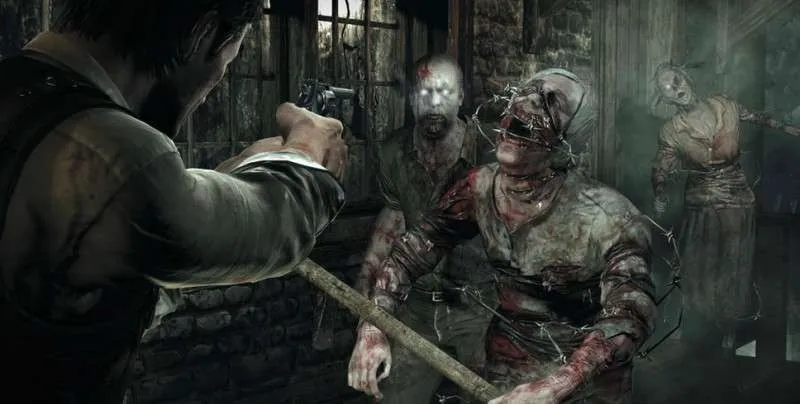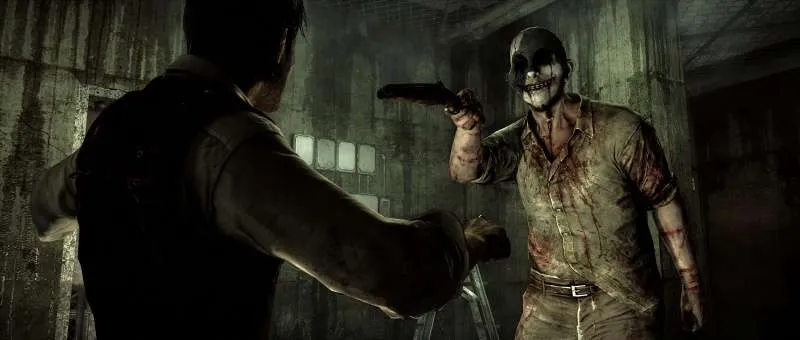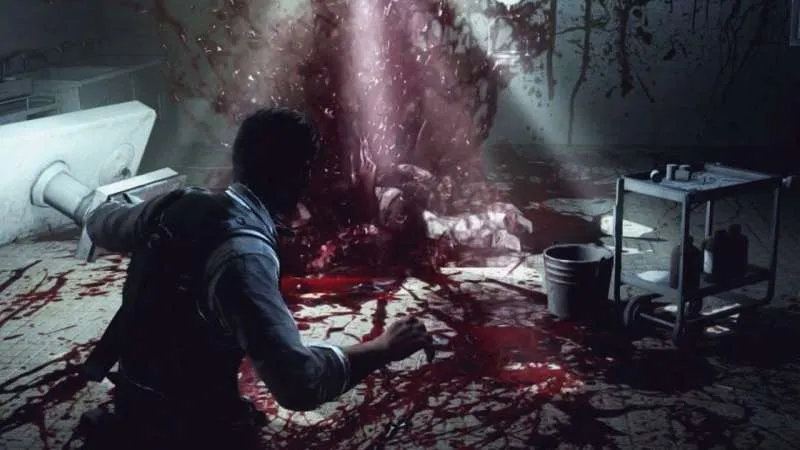I recently checked out the first few chapters of Bethesda’s third-person survival horror title The Evil Within, which launched last October. I could summarize my three-hour thrill ride with The Evil Within as the least-original but still generally excellent horror game I have played since the original Dead Space.

Just like EA’s sci-fi shooter, The Evil Within borrows generously from popular games and movies. There are bits and pieces of so many different, well-respected franchises scattered throughout the game design. The strongest influence was clearly Resident Evil 4 – partially because it was created by the same guy. Others include The Last of Us, Paranormal Activity, Saw, and so on.
The lack of originality doesn’t really have a negative impact on the ensuing experience; The Evil Within pulls it off very well, delivering a gripping and terrifying atmosphere that keeps you on your toes and constantly looking over your shoulder. The way the game opens up immediately reminded me of the Saw movies and countless slasher flicks; the gratuitous gore and haunting nature of the game makes you feel like death is always around the corner.

The Evil Within does most of its third-person mechanics pretty well: movement is somewhat clunky, although it is clear that this was intentional. Something that really irked me; you often need to crouch and sneak throughout the environment, but you cannot aim and fire any weapons while crouching. The Evil Within is more of a “survival horror” game than many of the action-focused Resident Evils (RE5, RE6), so you are encouraged to conserve ammo and make every shot count.

Unfortunately, the sloppy aiming controls and targeting reticle gave me fits; more than Resident Evil 4 ever did. Sometimes it was very difficult, especially in cramped quarters, to hit your mark – this led to plenty of repeated deaths. This became slightly frustrating at certain points, where checkpoints or save points were spread apart. The zoomed perspective of the camera felt very claustrophobic, which might have been the intent, but also partially to blame for the issues with targeting.
To be fair, The Evil Within features an upgrade system similar to Resident Evil 4 – part of my troubles with the early weapons were very likely the result of having fewer upgrades. Any weapon can be enhanced using upgrade points that are earned by picking up vials of glowing green goo – this is where the game encourages “looting” and scouring each area for bonus goodies. You can increase stats like ammo capacity, damage, “critical hit” rate (for explosive headshots), accuracy, and reload speed. This was one of my favorite parts of RE4, and from what I saw in The Evil Within, the upgrade system adds quite a bit to the third-person gameplay.

To wrap up this MicroReview for The Evil Within, the production values were surprisingly impressive – for the most part. I noticed that the visuals seem to look much better in real time, rather than during cut-scenes. Textures were blurry, and in general the level of detail seemed to drop quite a bit.
On the other hand, this game has absolutely incredible lighting effects – I would say some of the best atmospheric lighting in any recent survival horror title. The sound design was also impeccable, with excellent use of effects, background noise and surround sound.

I am excited to play the game a bit more at some point, but I would go ahead and recommend The Evil Within to anyone that enjoys horror games, films, and especially the Resident Evil series. It may have some weaker points here and there; apparently the story has been the focus of a lot of criticism, but I really enjoyed what I played, and found myself surprisingly pulled into the action.